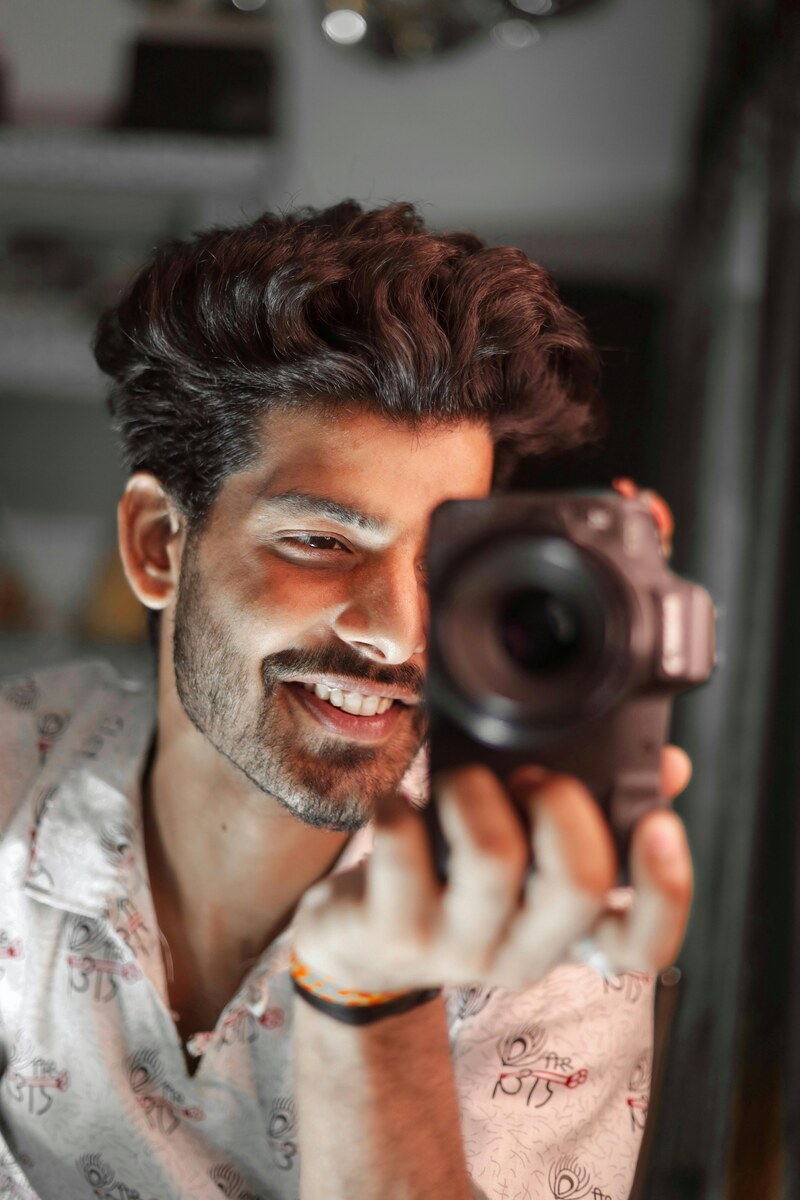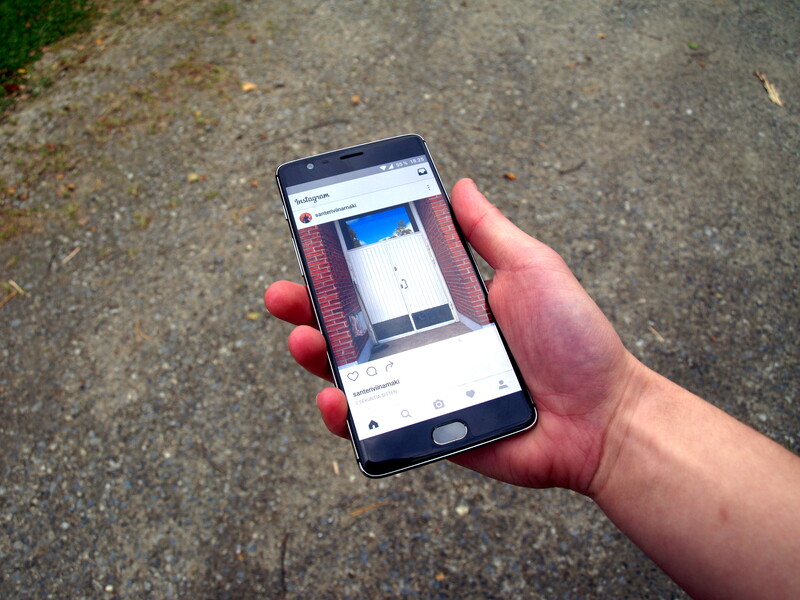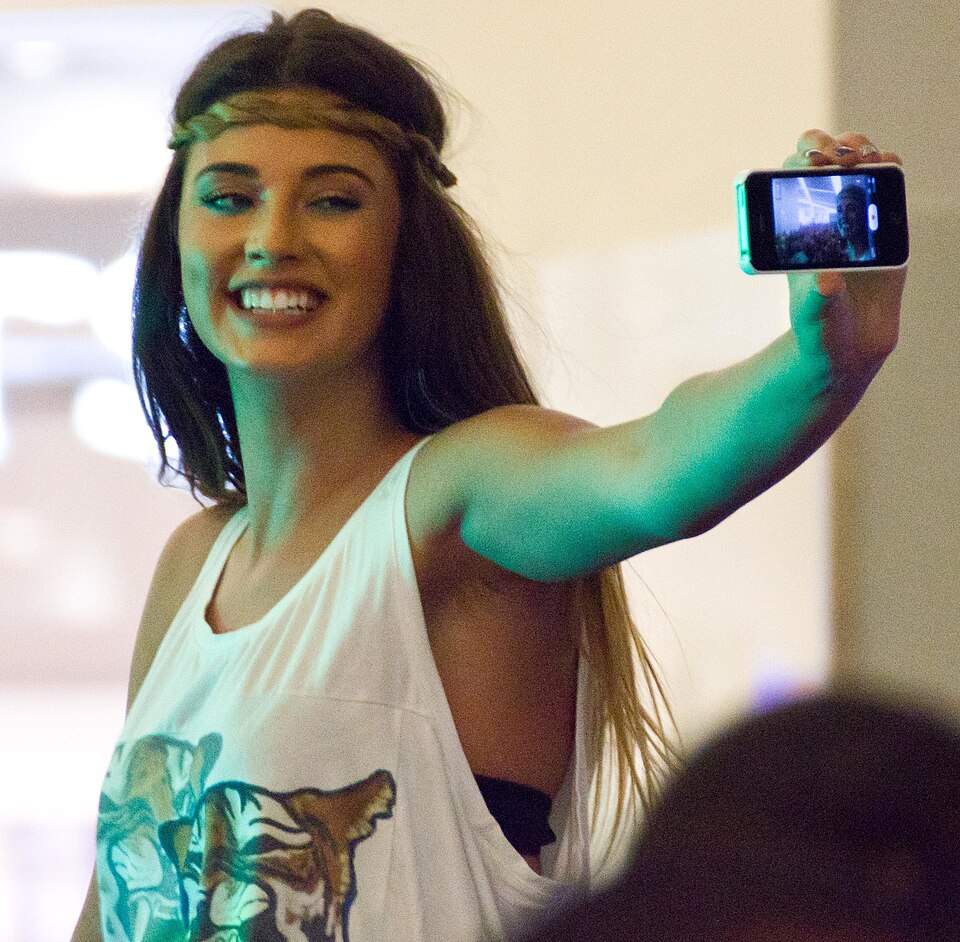Understanding Professional Editing Philosophy
Professional selfie editors follow a “less is more” philosophy that contradicts popular assumptions about heavy filtering. Industry analysis reveals that content creators with the highest engagement rates apply edits so subtly that viewers can’t identify specific modifications, yet the overall image quality appears significantly enhanced.
The Professional Standard: Edits should improve image quality and correct technical flaws without creating an artificial appearance. This approach requires understanding both technical editing principles and human perception psychology.
Common Amateur Mistakes: Beginners typically over-smooth skin, over-brighten eyes, and apply filters uniformly across the entire image. These approaches create the telltale “edited” look that professional work avoids.
Essential Technical Foundations
Lighting Analysis and Correction
Before applying any effects, professionals analyze their lighting conditions to determine appropriate corrections. Poor lighting causes 78% of selfie quality issues, making this the most critical step in the editing process.
Exposure Assessment: Check if your face is the correct brightness relative to the background. Professional selfies maintain facial exposure even if backgrounds become slightly overexposed or underexposed.
Shadow Management: Harsh shadows under eyes, nose, or chin indicate lighting problems that require targeted correction. Use dodge tools or selective brightness adjustments rather than overall exposure changes.
Color Temperature Balancing: Indoor lighting often creates yellow or blue color casts that make skin appear unnatural. Professional editors adjust white balance before making other modifications.
Composition and Cropping Techniques
Professional selfie composition follows established photography principles adapted for close-range portrait work.
Rule of Thirds Application: Position your eyes along the upper third line rather than centering your face in the frame. This creates more dynamic, professional-looking composition.
Aspect Ratio Considerations: Different social media platforms require different dimensions. Professional creators plan their crops during shooting rather than cropping arbitrarily during editing.
Background Management: Professional selfies either feature intentionally blurred backgrounds or carefully chosen environments that complement rather than compete with the subject.
Step-by-Step Professional Editing Workflow
Phase 1: Technical Corrections
Step 1 – Exposure Optimization: Adjust overall brightness so facial features are clearly visible without blown-out highlights. Professional standard: you should be able to see detail in both the brightest and darkest areas of the face.
Step 2 – Color Correction: Fix any color casts caused by artificial lighting. Indoor shots often require warming, while outdoor shade requires cooling. The goal is natural-looking skin tone.
Step 3 – Contrast Enhancement: Increase contrast moderately to add depth and definition. Professional editors avoid extreme contrast adjustments that create harsh transitions.
Step 4 – Clarity and Sharpening: Apply subtle sharpening to eyes and lips while avoiding over-sharpening skin texture. Professional work maintains natural skin texture rather than eliminating it entirely.
Phase 2: Selective Enhancements
Eye Enhancement Techniques: Professional eye editing focuses on three areas: iris definition, catchlight positioning, and subtle whitening of eye whites. Avoid enlarging eyes or changing their shape, which creates obvious artificial results.
Skin Texture Management: Rather than smoothing all skin texture, professionals selectively reduce only blemishes and temporary imperfections while preserving natural skin character. This requires targeted healing tools rather than overall smoothing filters.
Lip and Teeth Refinement: Subtle lip enhancement involves slight color saturation and definition rather than size or shape changes. Teeth whitening should be minimal—professional results look naturally white rather than artificially bright.
Phase 3: Final Refinements
Highlight and Shadow Balance: Professional editors add subtle highlights to cheekbones, forehead, and nose while maintaining natural shadow placement. This creates dimension without obvious contouring effects.
Hair Definition: Use targeted sharpening or clarity adjustments on hair to add definition and separate strands, particularly around the face where hair frames features.
Background Optimization: Adjust background brightness and color saturation to ensure the subject remains the focal point without creating artificial separation between subject and environment.
Platform-Specific Optimization
Instagram Professional Standards
Instagram’s algorithm and user expectations have created specific professional standards for selfie presentation on the platform.
Color Grading Approach: Professional Instagram selfies often use consistent color grading that matches the creator’s overall feed aesthetic. This requires planning edits to fit within a broader visual strategy.
Compression Considerations: Instagram’s image compression affects fine details differently than other platforms. Professional editors preview their work at Instagram’s compressed quality levels before finalizing edits.
LinkedIn Professional Requirements
Professional networking platforms require more conservative editing approaches that maintain credibility while presenting polished appearance.
Natural Enhancement Priority: LinkedIn selfies should look professionally photographed rather than heavily edited. Focus on lighting correction and subtle skin refinements while avoiding obvious beauty effects.
Background Professionalism: Professional LinkedIn selfies often require background replacement or careful original background selection to maintain professional context.
Advanced Techniques for Experienced Users
Selective Color Adjustments
Professional editors manipulate specific color ranges rather than applying overall adjustments. This technique allows precise control over skin tones while independently adjusting background colors.
Skin Tone Isolation: Use color range selection tools to adjust only skin tones without affecting other image elements. This enables natural-looking corrections that amateur global adjustments cannot achieve.
Eye Color Enhancement: Professional eye color enhancement involves selective saturation of specific hue ranges rather than overall color changes that affect surrounding areas.
Dodging and Burning Techniques
Advanced professional editing incorporates traditional darkroom techniques adapted for digital selfie enhancement.
Facial Contouring: Use dodge (lighten) and burn (darken) tools to subtly enhance natural facial structure. Professional technique requires understanding facial anatomy to identify appropriate highlight and shadow placement.
Texture Enhancement: Selective dodging can enhance positive texture elements like eyelashes or eyebrows while burning can minimize negative texture elements without overall smoothing.
Common Mistakes and How to Avoid Them
Over-Processing Indicators
Professional editors train themselves to recognize when they’ve crossed the line from enhancement to obvious manipulation.
Skin Texture Loss: If skin appears plastic or unnaturally smooth, you’ve over-processed. Professional standard maintains visible pores and natural texture variation.
Color Unreality: Skin tones that appear orange, pink, or gray indicate color correction problems. Professional skin tones should look natural under the apparent lighting conditions.
Feature Distortion: Any obvious changes to facial proportions, eye size, or symmetry immediately identify amateur work. Professional enhancement works within natural feature boundaries.
Technical Quality Issues
Noise and Grain Problems: Over-smoothing often introduces artificial-looking noise patterns. Professional editors balance noise reduction with natural texture preservation.
Edge Artifacts: Poor masking or selection techniques create visible edges around edited areas. Professional work maintains seamless transitions between edited and unedited regions.
Tool Selection and Workflow Optimization
While our comprehensive analysis of the best photo editing apps for selfies covers specific application features, professional results depend more on technique than tool choice.
Professional App Features to Prioritize
Local Adjustment Tools: Professional editing requires the ability to adjust specific areas independently. Look for apps with masking, selective editing, or brush-based adjustment tools.
Curve and Level Controls: Advanced tonal control through curves and levels enables professional-quality lighting corrections that simple slider adjustments cannot achieve.
Color Grading Capabilities: Professional color work requires separate control over highlights, midtones, and shadows in different color channels.
Workflow Efficiency Tips
Preset Development: Create custom presets for your common lighting conditions and skin tone requirements. Professional editors rarely start from scratch for routine corrections.
Non-Destructive Editing: Use editing methods that preserve original image data, allowing later adjustments without quality loss. This approach enables professional-quality refinements over time.
Quality Assessment and Refinement
Professional Review Process
Professional editors follow systematic review processes to ensure consistent, high-quality results.
Distance Testing: View your edited selfie at the actual size and distance it will be seen by your audience. Many editing mistakes become obvious when viewed at final presentation size.
Context Comparison: Compare your edited selfie against professional examples in similar contexts. This calibrates your expectations against current professional standards.
Time-Delayed Review: Professional editors often review their work after time delays to identify problems they missed during intensive editing sessions.
Consistency Maintenance
Style Documentation: Maintain notes or presets that document your successful editing approaches for consistent results across multiple selfies.
Progressive Skill Development: Professional-quality selfie editing improves gradually through consistent practice and study of advanced techniques.
Privacy and Security Considerations
Professional selfie editing requires understanding the privacy implications of different editing platforms and approaches.
Local vs. Cloud Processing: Professional creators often prefer local processing to maintain control over their image data. Our investigation into selfie app privacy risks details the security considerations for different editing approaches.
Metadata Management: Professional editors understand how to manage image metadata to protect location and device information while maintaining image quality.
Future Trends in Professional Selfie Editing
Professional selfie editing continues evolving with technological advances and changing social media expectations.
AI-Assisted Professional Tools: Emerging AI technologies enable more sophisticated automatic adjustments while maintaining professional control over final results.
Real-Time Professional Effects: Advanced mobile processors increasingly enable professional-quality adjustments during capture rather than requiring post-processing.
Transparency and Authenticity Trends: Professional standards are shifting toward more natural-looking results as audiences become more sophisticated about identifying heavily processed images.
Practice Exercises for Skill Development
Beginner Practice Routine
Daily Lighting Analysis: Photograph yourself in different lighting conditions and practice correcting exposure and color temperature issues.
Before/After Comparisons: Create systematic before/after comparisons to track your improvement and identify successful techniques.
Professional Recreation: Practice recreating the editing style of professional selfies you admire, focusing on understanding the specific techniques used.
Advanced Skill Building
Technique Isolation: Practice individual techniques (such as eye enhancement or skin refinement) in isolation before combining them in complete edits.
Platform Optimization: Edit the same selfie for different platforms to understand how professional requirements vary across contexts.
Conclusion: Developing Professional Standards
Professional selfie editing combines technical skills, artistic judgment, and strategic thinking about audience and platform requirements. The techniques outlined in this guide provide the foundation for creating compelling, authentic-looking selfies that stand out in today’s crowded digital landscape.
Success in professional selfie editing comes from understanding that the goal is enhancement rather than transformation. The most successful professional editors create results that make viewers think “they look great” rather than “that’s heavily edited.”
Remember that professional results develop gradually through consistent practice and continuous learning. Start with basic corrections and gradually incorporate advanced techniques as your skills and artistic judgment develop.
For more insights into the apps and tools that can support your professional editing workflow, refer to our detailed analysis of the best photo editing apps for selfies. The combination of proper technique and appropriate tools creates the foundation for truly professional results.
Continue developing your professional selfie editing skills by practicing these techniques consistently and studying the work of creators whose style you admire. Professional results require patience, practice, and attention to detail, but the improved quality of your content will justify the investment in learning these advanced techniques.







